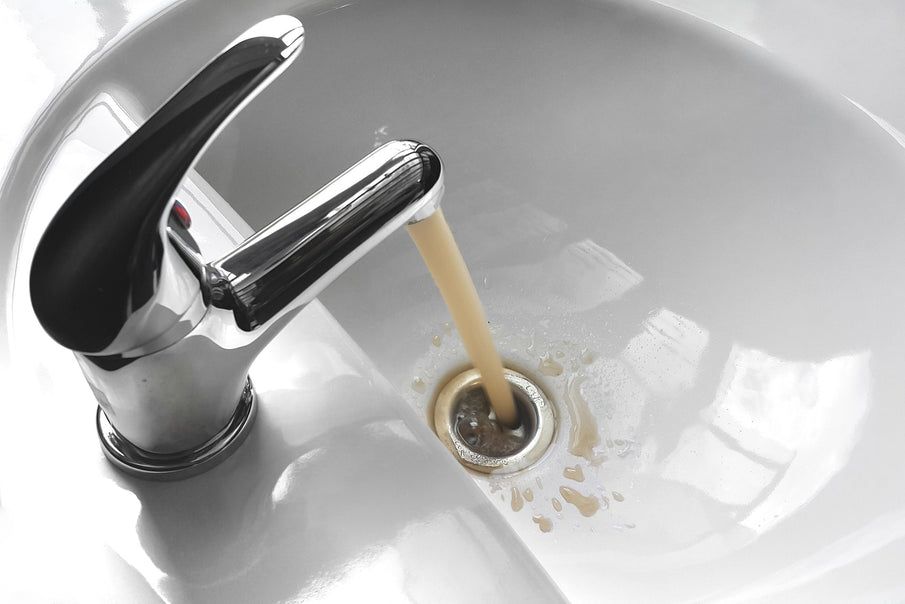Tannins in Water: Should I Consider Getting a Water Filter
Steve Johnson • 14 January 2022
Does your water have a bitter taste or a musty odour? Are you noticing yellow tinting to your H20? If yes, you’re likely dealing with a particular variation of water contamination.
To put it simply, it’s likely that you have tannins in your home’s water.
Don’t fret; tannin contamination is a common and solvable problem. This article will establish what tannins are, how to test for them, and what kind of filtration options are available to assure your water is clean, clear, and crisp. Read on if you’re looking for a solution for your tannin problem.
What Are Tannins?
Before we can seek a solution to your home’s water contamination issues, it’s important to understand what tannins are and where they come from.
Tannins are a natural organic material that can be the byproducts of nature’s fermentation process, be created as water passes through peaty soil and decaying vegetation. This can cause water to have a faint yellow to tea-like colour and can cause yellow staining on fabrics, fixtures, china and laundry.
Tannins may give a tangy or tart aftertaste to water. They may also cause water to have a musty or earthy odour.
Tannins – also known as fulvic or humic acid – are more common in surface water supplies and shallow wells than in deep wells. In marshy, low-lying, or coastal areas, water is also more susceptible to tannins.
What Tannins Do To Water
You may be unsure what this contamination is doing to your drinking water. Think of tannins in your water the way you might think about a steeping teabag. As the tea steeps in hot water, it becomes stronger and more flavorful.
Tannin contamination works on a sliding scale, from highly contaminated to barely detectable levels of tannins in your water supply. Chances are, if you’re tasting tannins, you’re dealing with at least a moderate level of contamination.
Besides the taste as mentioned above, the earliest signs of tannin contamination include:
- The tint – Is your water looking a little more yellow than you recall? Pure water should be obvious and transparent, so if you’re dealing with yellow water or brown water, that’s a sign you may have a tannin issue. Test your water supply from multiple sources to assure that it isn’t a plumbing issue before proceeding—your water should look the same when coming out of any faucet, whether that’s from your upstairs bathroom sink or the hose outside.
- Stains on fixtures – If you’re noticing a yellowish stain in your tub, sink, or toilet, you’re almost certainly dealing with tannin contamination. After a recent cleaning, fixtures can quickly become stained from the organic compound.
- Laundry problems – Noticing a yellow discoloration on your recently washed clothing? The washer might not be to blame, and Tannins can cause stains on clothes put through the wash cycle.
While tannins may put a damper on your drinking water, they can cause a host of other problems throughout your household. Tannins can make everyday household chores more complex than they should be.
Health Effects
Tannins are considered an aesthetic problem. While they may make water unappealing to drink and stain laundry, they present no health hazard.
Testing for Tannins
Tannins create a light yellow to dark brown discoloration in the water. A simple test for tannins involves filling a clear glass with water and letting it sit overnight. If the colour settles to the bottom of the glass, the discoloration is most likely caused by iron and/or manganese and not tannins. If the intensity of the colour remains intact, it is most likely caused by tannins. If you suspect your water may contain tannins and wish to know how much tannin is present in your water, contact your local or state health department for a list of state-certified laboratories that can perform tannin testing.
You may also wish to test for sulphates, alkalinity, iron, total dissolved solids (TDS) and hardness, as these may help determine which treatment method(s) will be most effective for your situation. There is another reason to test for iron along with tannins; iron creates a false positive for tannins and must be subtracted from the tannin result to determine that true tannin concentration.
Tannin Filtration Options
After establishing the precise contamination problems—whether strictly from tannins or a combination of water adulterants—the path to clean, delicious water leads directly to water filtration.
You’re most likely already familiar with filtration to some degree, perhaps from a pitcher-based water filter, or an attachable filter on your sink. These are considered point-of-use filtration systems, and while efficient for minor filtration needs, if you’re dealing with tannins in your drinking water, you’ll need a point-of-entry filtration option.
Point-of-entry filtration means the filter is attached to the source of the surface water supply, effectively filtering all the water within your home, as opposed to a single faucet. Point-of-entry filtration can vary in size and style but the most common options for a tannin filter system include:
- Carbon filtering – The most widely known variation of water treatment. Water passes through activated carbon filters that catch various contaminants as the water flows through. While it may work to lessen the contaminant of your water, this method is one of the least effective in removing organic material from drinking water. Therefore it is not our top recommendation.
- Water softening systems – A water softener processes water through a chemical process known as “ion exchange.” The minerals and tannins present in contaminated water are extracted and replaced with sodium ions resulting in clean, clear drinking water. Take note that while highly effective at removing tannins, water softening systems are less useful for filtering bacteria.
- Reverse osmosis systems – Reverse osmosis (RO) uses a serious amount of pressure to force water through a semi-porous membrane. This membrane traps tannins and other contaminants while letting water molecules through. RO can remove an assortment of contaminants including tannins, making it a great all-around filtration option.
While the circumstances and requirements of filtration are based on your specific needs, rest assured that there are several methods to guarantee clean water in your home. There’s no reason to let tannins spoil the experience of a seriously refreshing glass of water.



